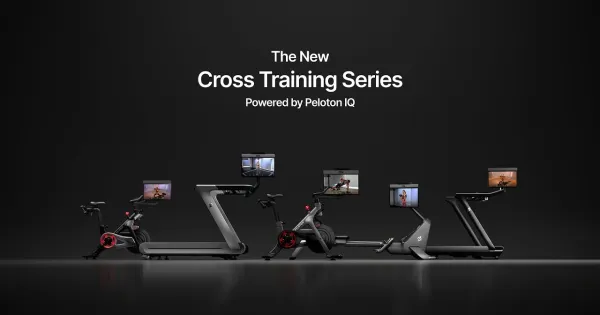Business to Brand: How to Become a Media Company

The line between traditional business operations and media production is increasingly blurring. One significant transformation observed across various industries is the shift from being merely a business to becoming a media company. This transition is not just about producing content; it's about adopting a new mindset where content creation and distribution become central to the brand's identity and growth strategy. Engaging with your audience through consistent, valuable content can turn your business into a trusted source of information and entertainment, far beyond the traditional confines of your product or service offerings.
The evolution from business to brand, and ultimately to a media company, involves understanding the power of content in shaping consumer perceptions and decisions. It's about leveraging every available channel to tell your story, connect with your audience, and build a community around your brand. This article aims to guide business owners, marketers, and entrepreneurs through the process of transforming their business into a media powerhouse. By focusing on strategic planning, content creation, audience engagement, and monetization, businesses can unlock new opportunities for growth and engagement in the digital age.
Understanding the Media Company Model

A media company, at its core, is an entity that communicates information, entertainment, or a message to a large audience via various channels. Unlike traditional businesses that focus primarily on selling products or services, media companies prioritize content creation and distribution to engage their audience. This content can range from news articles and videos to podcasts and social media posts. The goal is to attract and retain a loyal audience by providing value, whether that's through informative, educational, or entertaining content.
Successful media companies share several key characteristics, including a strong brand voice, a commitment to content quality, and a deep understanding of their audience. Transitioning from a traditional business model to a media company model means embracing these characteristics and integrating them into your business strategy. This section will explore what sets media companies apart, how they engage with their audience, and the strategic shifts required for a business to adopt this model successfully.
Strategic Planning for Transition

Transitioning from a traditional business model to a media company requires meticulous strategic planning. This process involves understanding your market, identifying your target audience, and crafting a content strategy that aligns with your business objectives. Below are essential steps to guide you through this planning phase.
Identifying Your Niche and Audience
The first step in becoming a media company is to identify your niche — the specific market segment you aim to serve. This decision should be based on your business’s strengths, market demand, and your personal interests or expertise. Once you've pinpointed your niche, the next crucial step is to understand your audience deeply. Knowing their demographics, interests, and online behavior will enable you to create content that resonates with them, addresses their needs, and engages them on a deeper level.
Setting Clear Goals and Objectives
Your transition to a media company should be goal-oriented. Establish clear, measurable objectives for what you want to achieve with your content. Goals can range from increasing brand awareness, boosting engagement, driving website traffic, to generating sales leads. These objectives should guide your content strategy and help you measure success along the way.
Developing a Content Strategy Aligned with Business Goals
A well-defined content strategy is the backbone of your transition. This strategy should detail the types of content you will produce, the channels you'll use to distribute it, and how it aligns with your overall business goals. Your content strategy should also consider the customer journey, providing valuable content at each stage to nurture leads into customers. Additionally, it should include a content calendar to organize and schedule content production and publication, ensuring a consistent flow of content to engage your audience.
Content Creation and Management

Creating and managing content is a critical component of operating as a media company. This section explores the types of content you can produce, how to create a content calendar, and the tools and resources that can assist in content creation and management.
Types of Content
Diversifying your content types is crucial to engage different segments of your audience. Depending on your resources, audience preferences, and business objectives, your content can include:
- Articles and Blog Posts: In-depth content that provides value, such as how-to guides, industry insights, and thought leadership pieces.
- Videos: From short social media clips to longer, informative or entertaining videos on platforms like YouTube.
- Podcasts: Engaging audio content that delves into topics of interest for your audience, featuring interviews, discussions, or educational content.
- Infographics and Visuals: Eye-catching content that simplifies complex information or data.
- Social Media Posts: Engaging and interactive content tailored to each platform to boost visibility and engagement.

Creating a Content Calendar
A content calendar helps you plan, organize, and schedule your content production and publication across different platforms. It ensures consistency, which is vital for keeping your audience engaged and attracting new followers. Your content calendar should include key dates, themes, content formats, and distribution channels, allowing you to strategically align content with business goals and audience interests.
Tools and Resources
Leveraging the right tools can streamline your content creation and management processes. Tools like content management systems (CMS), graphic design software, video editing tools, and social media management platforms can significantly enhance efficiency and quality. Additionally, resources such as stock image libraries, content idea generators, and SEO tools are invaluable for creating engaging and optimized content.
Building an Audience

A media company’s success hinges on its ability to build and maintain a dedicated audience. This section covers strategies for audience engagement, leveraging social media, and the importance of community building.
Strategies for Audience Engagement and Growth
Engaging your audience goes beyond just producing content. It involves interacting with your audience through comments, social media, and other channels. Strategies like hosting live Q&A sessions, running contests, and soliciting feedback can foster a sense of community and loyalty. Personalizing content and communications based on user behavior and preferences can also significantly enhance engagement.
Leveraging Social Media Platforms
Social media platforms are powerful tools for building an audience. They provide a direct line to engage with your followers and distribute your content widely. Each platform has its unique features and audience, so tailor your content and engagement strategies to fit the platform’s characteristics. Consistency, quality, and interaction are key to growing your social media presence.
Importance of Community Building and Interaction
Creating a community around your brand or content can transform casual followers into brand advocates. Encourage interaction among your audience by creating forums, groups, or social media pages where they can share experiences, ask questions, and connect with each other. A strong community enhances customer loyalty, provides valuable feedback, and helps spread your content through word-of-mouth.
Monetization Strategies

As your media company grows, exploring monetization strategies becomes crucial to ensure sustainability and profitability. There are multiple paths to monetize your content and audience engagement effectively. Here are some of the most successful strategies:
Direct Monetization
- Advertising: One of the most common revenue streams for media companies comes from advertising. This can be in the form of banner ads, sponsored content, or native advertising within your content platforms. The key is to maintain a balance between advertising and content quality to not deter your audience.
- Sponsorships: Similar to advertising, sponsorships involve partnering with brands or companies looking to promote their products or services to your audience. These partnerships can offer more creative and integrated ways to present sponsored content, such as through video mentions, podcast episodes, or social media posts.
Indirect Monetization
- Lead Generation: For businesses transitioning into media companies, content can be a powerful tool for lead generation. By offering valuable content, such as ebooks, webinars, or courses, you can capture leads for your primary business products or services.
- Product Sales: Utilizing your media platform to sell products directly to your audience is another effective monetization strategy. This can range from physical products, digital goods, or merchandise related to your brand or content.
Subscription Models and Memberships
Offering premium content or exclusive benefits through subscription models or memberships can generate recurring revenue. This could include access to exclusive articles, video content, podcasts, or community forums. Such models not only provide a steady income stream but also help in building a loyal audience base willing to pay for high-quality content.
Analyzing and Scaling

To ensure the long-term success of your media company, it's essential to analyze performance and strategically scale your operations. This involves using analytics to understand your audience and content performance, then using those insights to make informed decisions about future content and strategies.
Tools and Metrics for Analyzing Success
Utilize analytics tools to measure your content's performance across different platforms. Key metrics include website traffic, social media engagement rates, video views, podcast listens, and conversion rates for lead generation or sales. These metrics can help you identify what content resonates with your audience and where there's room for improvement.
Scaling Content Production and Distribution
As your audience grows, scaling content production and distribution becomes necessary to meet demand and maintain engagement. This might involve hiring additional content creators, investing in better production equipment, or expanding into new content formats and channels. The goal is to grow your content offerings without sacrificing quality or losing your brand’s voice.
Expanding into New Markets or Mediums
Finally, consider expanding your media company into new markets or mediums. This could mean targeting a new audience segment, exploring international markets, or creating content for emerging platforms. Diversification can help mitigate risks and open up new revenue streams.
Final Thoughts
Transforming your business into a media company is a strategic move that can significantly enhance your brand's visibility, engagement, and profitability. By focusing on strategic planning, content creation, audience building, and monetization, you can establish a successful media presence. Embracing the media company mindset requires dedication, creativity, and adaptability, but the potential rewards are immense.
As the internet continues to evolve, those who can effectively engage and monetize their audience through compelling content will be well-positioned for long-term success.
Key Takeaways
| Section | Key Takeaways |
|---|---|
| Introduction | Transitioning to a media company enhances brand visibility and engagement through strategic content creation. |
| Understanding the Media Company Model | Media companies prioritize content to engage audiences, differing from traditional businesses in focus and strategy. |
| Strategic Planning for Transition | Success requires identifying your niche, setting clear goals, and developing a content strategy aligned with business objectives. |
| Content Creation and Management | Diversify content types and use a content calendar and tools for efficient management and production. |
| Building an Audience | Engage and grow your audience through social media, interactive strategies, and community building. |
| Monetization Strategies | Explore direct and indirect monetization, including advertising, sponsorships, lead generation, and subscription models. |
| Analyzing and Scaling | Use analytics to guide content and strategy decisions, and scale production and distribution as your audience grows. |
| Final Thoughts | Adopting a media company mindset requires dedication and adaptability, offering significant rewards for long-term success. |
Top Books on Becoming a Media Company
- "Crushing It!: How Great Entrepreneurs Build Their Business and Influence—and How You Can, Too" by Gary Vaynerchuk: Vaynerchuk shares lessons and inspiring stories from entrepreneurs who have grown their businesses by building strong personal brands and leveraging social media. The book offers practical advice on how to use various social media platforms to develop a loyal community and enhance business success.
- "Content Inc.: How Entrepreneurs Use Content to Build Massive Audiences and Create Radically Successful Businesses" by Joe Pulizzi: Pulizzi outlines a successful strategy for using content to start and grow a business. The book emphasizes the importance of building an audience before product development and offers a step-by-step approach to becoming a content-first business.
- "Building A StoryBrand: Clarify Your Message So Customers Will Listen" by Donald Miller: Miller introduces the StoryBrand framework, a powerful method for clarifying your brand's message and making your company stand out. The book teaches readers how to communicate effectively to ensure their brand captures attention in the crowded marketplace.





